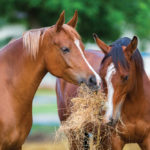Magnesium is an essential macro-mineral that plays a crucial role in the health and wellbeing of horses. It is essential for more than 350 biochemical processes in the body of the horse, including generation of cellular energy and decoding genetic information. Understanding the importance of magnesium at the cellular level and its impact on health issues can help








